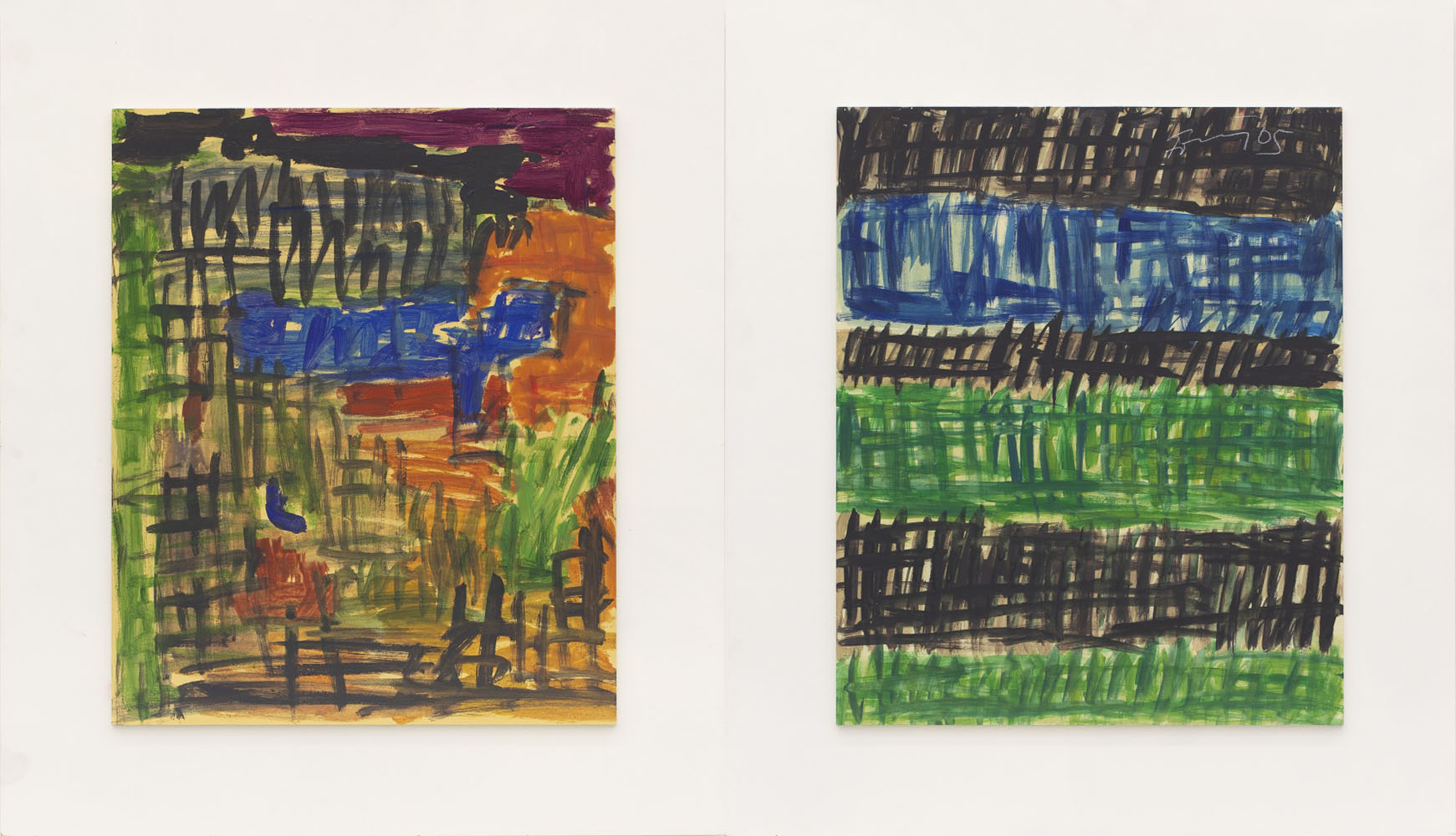ART-PRESENTATION: Günther Förg-A Game of Chess
 Günther Förg was as equally influential on the 20th Century German art scene, he produced photographs and paintings, as well as wall paintings, sculptures, and reliefs. In the 1980s and ’90s Förg’s work was continually reinterpreted: initially considered a postmodernist, he was later seen as engaging with the legacy of expressionism.
Günther Förg was as equally influential on the 20th Century German art scene, he produced photographs and paintings, as well as wall paintings, sculptures, and reliefs. In the 1980s and ’90s Förg’s work was continually reinterpreted: initially considered a postmodernist, he was later seen as engaging with the legacy of expressionism.
By Dimitris Lempesis
Photo: Almine Rech Gallery Archive
In the “A Game of Chess” an exhibition with works by Günther Förg, Almine Rech Gallery’s main space features a wall painting as well as a series of black and white photographs devoted to Claude-Nicolas Ledoux, the 18th century French architect. It is crucial to note that in 1933, the Austrian historian of art and architecture Emil Kaufmann conceived of Ledoux as the departure point of what he called autonomous architecture, i.e., modern architecture, whose arrival point he located in the work of Le Corbusier. Förg was born in the Allgäu region and studied at the Akademie der Bildenden Künste in Munich, his ideas have continuously migrated through numerous media. In 1984, Förg earned his spurs after being included in ‘von hier haus’, an exhibition on new German painting that Kasper König curated in Düsseldorf. Since then, he has been associated with two trajectories in postwar art. The history of his reception within the Stedelijk Museum in Amsterdam illustrates the duality of his protean artistic practice. In 1995, the Stedelijk, which at the time was led by Rudi Fuchs, presented Förg as the successor to the Germanic painters grouped together as the so-called ‘Neo-Expressionists’: Georg Baselitz, Per Kirkeby, Markus Lüpertz, and A.R. Penck. ‘A New Spirit in Painting’ (1981) showed that these artists actually endeavoured to root themselves in the culture of their origins and the pictorial tradition. More recently — as seen in the retrospective held three years ago by the Stedelijk and the Dallas Museum of Art — Förg was portrayed as an artist concerned with the interpretation and exploration of modernism from a European and continental perspective (which Blinky Palermo inaugurated in Germany). The current exhibition at Almine Rech shows, however, that Förg’s strength lies rather in his ability to create artworks that resist any kind of determinism, and are thereby not programmatic at all, which is to say that they are not embedded in the construction of a certain discourse on art. Förg expressed, basically, a fragile beauty, working at the threshold of ‘Neo-Expressionism’ and modernism.
Photo: Günther Förg, Untitled, 1988, Acrylic on canvas, 90 x 110 cm, © Günther Förg, Courtesy the artist and Almine Rech Gallery
Info: Almine Rech Gallery, 64 rue de Turenne, Paris, Duration: 5/3-10/4/2021, Days & Hours: Tue-Sat 10:00-18:00, www.alminerech.com






Center: Günther Förg, Untitled, 2004, Acrylic on canvas, 60 x 80 cm, © Günther Förg, Courtesy the artist and Almine Rech Gallery
Right: Günther Förg, Decke 5, 1998, Acrylic on canson, 173 x 123 cm, © Günther Förg, Courtesy the artist and Almine Rech Gallery



